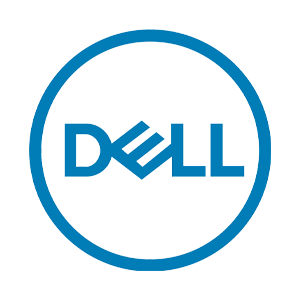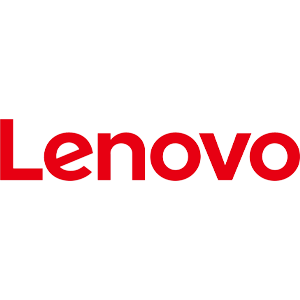We are here to Support you
Log your tickets with us
Quality Computers
Lower Cost
Access to Real Time Support Information
Post-Sale Support
On-Site Support
FAQ
Method 1: Reconnect your AC adapter and your
battery
One of the simplest and most effective ways to fix this issue is to reconnect your AC adapter and your laptop battery. To do so:
1) Turn your laptop power off.
2) Unplug the AC adapter and the battery from your laptop.
3) Press and hold the power button on your laptop for 20 seconds to release the residual power in your laptop.
4) Re-connect the battery and the AC adapter to your laptop.
5) Turn your laptop’s power back on and check to see if the battery can be charged.
Method 2: Plug your laptop to a wall socket
It is possible that your laptop battery cannot be charged because you are using a surge protector. It can affect the functionality of the adapter. Try turning the power of your laptop off and connecting the AC adapter directly to a wall socket. Then re-start your laptop to see if whether the problem is resolved.
Method 3: Try another AC adapter
The issue may result from the faulty AC adapter you are using. You can test your laptop battery with another AC adapter and see if it can charge your battery. If the new AC adapter works for you, you should have the original one you had replaced.
Method 4: Reinstall your battery driver
The problem can also occur if you are using the wrong battery driver. To check, you can reinstall the driver and see if this fixes your problem.
To reinstall your battery driver, you can utilise the Device Manager of your operating system. First, connect your laptop to the Internet. Next, find and uninstall the battery
driver in the Device Manager. After that, restart your laptop and this will cause the driver to be automatically reinstalled.
Method 1: Restart your computer
The CPU fan can easily be stopped with a finger or debris since it does not have much torque.
To prevent the fan wiring from frying or any other damage, your fan will stop spinning even if you remove your finger or the debris. Restart your computer to clear this error.
Method 2: Clean your fan by blasting it with compressed air
Fans usually get clogged with dust. The buildup could reach the fan blades and prevent them from spinning since these fans do not produce a lot of torque. You can disassemble your fan and clean it. If you are not sure how to do that, get a can of compress air and blast it into the fan vents. Make sure that your fan does not get to high RPMs (revolutions per minute) since it may damage the fan.
Method 3: Clear any wiring from the fan blades
Since CPU fans do not produce a lot of torque, wiring going into the fan motor can block the blades from spinning. Take down your fan and make sure that there are no wires or anything going into the fan blades. Secure the fan wiring onto the side using epoxy to ensure they do
not get in the way of the fan blades.
Method 4: Reset/Flash your BIOS
Your BIOS controls your fan. Resting it will clear any misconfigurations and get your fan working. To reset the BIOS:
1. Shut down your PC.
2. Press the power button and immediately press F2 to enter into BIOS setup.
3. Press F9 (or the load defaults button shown on the BIOS screen) to reset your BIOS.
4. Press Esc or F10 and select “save and Exit” press Enter and allow your system to restart then check if the fan now works.
You can also reset your BIOS by removing all power cables, battery, and removing the CMOS battery and pressing the power button for at least 30 seconds.
Method 5: Replace your fan
If you have tested your fan on another PC and it doesn’t work, or you have tested a known working fan on your PC and it still doesn’t spin, then you will need to get a new fan. You should also ensure that you are getting a 3-5V or 12V on the CPU fans terminals to avoid any doubt.
Method 1: Reboot Your PC
If you followed the above advice, you’ll have already done this, but just in case: have you tried turning it off and on again? A reboot corrects a thousand ails, as my old IT manager used to say. If you can’t use the trackpad or mouse to reboot the PC, just hold down the power button for about 10-15 seconds to turn the PC off, then turn it back on.
If that doesn’t fix the problem, try booting into Safe Mode and see if that works—it won’t fix the problem permanently, but it will help you determine whether your keyboard is faulty or not.
Method 2: Reinstall Your Keyboard Driver
Sometimes the driver managing your keyboard can run into problems, particularly if you install third-party software often and/or you turn your machine off all the time without using the Shut Down command.

Open the Start menu and type “Device Manager.” Press Enter, and expand the Keyboards section. If any of the items in this section have a yellow exclamation point next to them, it can indicate a problem. Even if you don’t see an exclamation point, though, I recommend right-clicking your keyboard in this menu and choosing Uninstall Driver. Reboot your PC, and Windows should automatically grab the generic drivers for your keyboard, which may cause it to work again.
If that doesn’t bring the keys back to life, or if the Keyboard icon isn’t even visible in the Device Manager, head to the laptop manufacturer’s support page and install the latest drivers for the keyboard (however if there’s no keyboard driver, try reinstalling the chipset and/or USB drivers). You can read more about downloading and updating drivers in this guide.
Method 3: Adjust Your Keyboard Settings

Certain software settings can cause your keyboard to behave erratically, even if they were intended to be beneficial. For example, if your keyboard’s Repeat Delay setting is too short, pressing a key might type two or more characters. Head to your keyboard’s settings by opening the Start menu, typing “Control Panel,” and searching for Keyboard in the upper-right corner of the Control Panel window.
If, on the other hand, you notice a delay between pressing a key and that character appearing on screen, you may want to adjust the Filter Keys setting. From the Start menu, search for Ease of Access. Enter that menu and click on “Make the keyboard easier to use.” If Filter Keys is turned on, uncheck that box and press OK to see if it helps (similarly, if your keyboard is behaving strangely, make sure Sticky Keys is also turned off in this menu).
Method 4: Change Your Keyboard Layout
If your keyboard keys work but produce different letters than the keys indicated, it’s possible your language or keyboard layout was changed accidentally (or someone in your office pulled a decades-old prank).

Open the Start menu and type “Language” to find the Windows’ Region & Language settings panel. Click on it, then head down to your list of languages. Click on the one you want to use—for most US users it’ll be English (United States)—and click the Options button. Make sure US QWERTY is available under Keyboards on the next page, and remove any keyboard layouts you aren’t using.
We know that the CPU is the brain of a computer. However, not everyone knows that while the CPU is the brain to functioning a computer, the hard disk is the body of it. The mind can’t be useful without the body, and this is what this article deals with. What if your internal hard disk is not detected? Some of you might simply restart the system, while some would care to reinstall the software. Here, we take a look at the factors that are behind the scenes where the hard disk is not detected and how to solve this issue.
Generally, an ATA or SATA port is set to auto-detect. If one finds that their hard disk is not detected by the system BIOS, the following steps (not in any particular order), can be used to isolate the issue.
Hard Drive Is Not Enabled in the BIOS
To access the BIOS of your system, you should be aware of the settings of your device. Different systems have different methods of accessing the BIOS. Every system displays brief message about entering the system setup soon after the power has been turned on. System Setup is often called the” System BIOS” or “CMOS Setup”.
If the hard disk is not detected, it could be because it is turned off in the system setup. There are mother manufacturers that tend to disable the unused ports in the BIOS by default. One has to enter the BIOS to verify their current status.
If a second hard disk is not detected after being connected, it could require to be enabled by turning it ON in the BIOS.
Accessing BIOS in Windows 10:
The latest versions of Windows come with greater processing speed, and therefore pressing a key on boot cannot prove to be helpful. As you will not be able to enter BIOS; we recommend that you follow the given steps to access the BIOS (if the hard disk is not detected).
1. Start with navigating to the settings. Click on the start menu icon which will help you get there.
2. Then select Update and Security.
3. Look for “Recovery” on the left side of the menu.
4. You then have to click on “Restart” under the advanced startup section. This reboots your computer to a special menu.
5. Choose Troubleshoot.
6. Move to the advanced options.
7. Select UEFI Firmware settings and finally click on Restart.
Faulty Cables within the Motherboard
There is a chance that the cables within the motherboard have become faulty. Therefore your hard disk is not detected. You can start by inspecting the motherboard and hard disk connections for misaligned or bent pins. Please note that the folding, crimping, pinching, or creasing data cables are often responsible for the wires breaking inside the insulation. However, in the same scenario, the exterior of the cable would appear normal. If you are unsure about the condition of your data cable, we recommend that you replace it.
Often, certain SATA cables can fall out of their connection. One can check the condition of their SATA cables and ensure they are tightly connected to the SATA port connection.
If replacing the cable doesn’t cause the problem to cease, the issue where the hard disk is not detected lies elsewhere.
The hard disk is not detected as the drive is not spinning up
This can arise when the drive is not receiving enough power to function and hence doesn’t spin up. You can check for this issue by performing the following steps:
• Turn the computer’s power off.
• Access the computer case and remove the data cable from the hard drive. This will ensure that any of the power saving commands that are being sent out is ceased.
• Turn the system back on, and check if the hard disk is spinning. One can feel a slight vibration upon touching the hard drive, and if the vibration is not there, the hard disk is not detected or did not start.
How to confirm whether the hard drive is spinning up or not?
If you cannot determine whether the drive is spinning or not while fixing the scenario where the hard disk is not detected, here are a few steps:
• Boot the computer and try to catch some noise.
• Turn the system’s power off.
• Disconnect the power cord from the system.
• Remove the power cable from the hard disk you are trying to fix (or if the hard disk is not detected).
• Reconnect the power cord to the system itself.
• You then have to boot the system to check if the hard disk sound is audible.
• Reconnecting the hard disk should help you catch some noise.
• Switch the power cables with a device like an external CD or DVD to ensure that the cable is not faulty.
• Check the power supply on the computer. This helps you to determine if there is enough electrical power to operate the drives and devices that are being used within the system.
• You then have to connect your drive to a different system.
• Please ensure that you connect the drive in a SATA-USB enclosure if possible, and check
if the scenario where the hard disk is not detected is fixed.
If this doesn’t fix the problem, you might have to get in touch with the manufacturer.
1. First check the cable. Unplug it from the computer and the outlet. Re-plug it on both sides and try booting it again.
2. Check the wall outlet. Plug something else into the outlet and see if it works.
3. Turn the system off and wait 30 seconds and then try again.
4. Reach behind the machine and see if you feel air blowing out of the power supply. If you do, then you know the machine is getting some power.
5. Look at the keyboard for the indicator lights being lit up as the machine boots.
6. Sometimes the monitor has something to do with the system acting up. Unplug the power cord from the monitor and the wall and re-plug it. Unplug the cable from the computer to the monitor and re-plug it into the monitor. Try rebooting.
7. Listen to identify a beeping series. If there is one, please report it to the technical team for help.
What can I do if I get a Blue Screen of Death?
There are a few possible options that can solve the BSOD error and get you back to a working computer.
01. Restart or Power cycle your computer
Firstly, we recommend that if your computer does not restart itself, proceed with a computer power reset cycle – turn off your computer manually by pressing and holding the power button until the computer is off and switch it on again. If your computer loads Windows with no errors, it might be an isolated error.
02. Scan your computer for Malware and Viruses
Malware can change files in the Windows system and trigger a Blue Screen of Death. Running a full PC scan can usually remove the infection and stop the BSOD occurring again.
03. Run Microsoft Fix IT
This tool is provided by Microsoft and can automatically troubleshoot whilst detecting errors in Windows as well as applies any available fixes.
To download this tool, go to the Microsoft website, search “fix it” on their search bar, and select your Windows version following the prompt. If you consider yourself to not be very
good with computers, it is recommended to get the advice of a computer technician for this step.
04. Check that the RAM is properly connected to the motherboard
A lot of BSOD errors are related to Memory modules. Check if your RAM is properly connected and firmly seated to your motherboard and that you are using compatible RAM
sticks with proper channel speed.
Again, this step requires you being familiar with computers to understand how to handle RAM.
05. Faulty Hard drive
A faulty Hard Drive can throw BSOD errors. This is normally a warning sign that your hard drive has started wearing out and might fail if not replaced soon, or your hard drive may just have some bad sector(s). The best solution is to perform a check disk to ensure your drive is healthy. To do so, please follow the instructions to this link provided by
Microsoft: https://support.microsoft.com/en-us/kb/315265
06. Check if a newly installed Device is causing Blue Screen of Death
If you have connected or installed a new device to your computer and a BSOD was triggered, try unplugging the device and check if your operating system is up-to-date, as
well as if the device driver is installed and up-to-date. Also check if the device is firmly installed and seated properly into the motherboard.
07. Update windows and apply any service packs and security updates available
It is important to keep your computer’s operating system up-to-date with the latest patch and fixes available from Microsoft or make sure Windows updater is configured to check for updates regularly.
Still cannot find the source of the problem and a solution?
You can always seek advice from your computer vendor if your computer is still under warranty.
Download Manuals


Still haven't had your problem solved?

Contact Details
Technical Support/Helpdesk Assistance: helpdesk@rentwise.com (Toll Free) 1800 88 0688 (Whatsapp) +6011 1239 0180

Contact Details
Sales Enquiries:
sales@rentwise.com
(Toll Free) 1800 22 2088
(Whatsapp) +6011 1239 0191

Contact Details
Billing enquiries:
billing@rentwise.com
Credit Control Enquiries:
creditcontrol@rentwise.com
Want to join our team?
We’re constantly recruiting for the best, so if you’re one, come on in!




